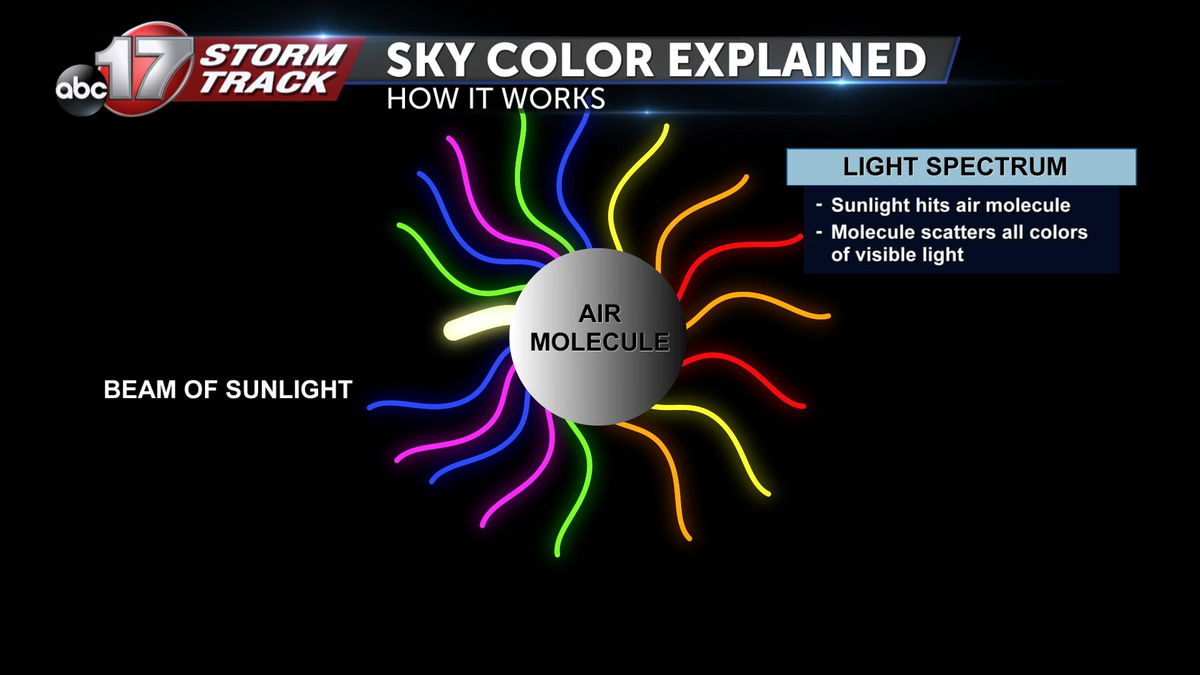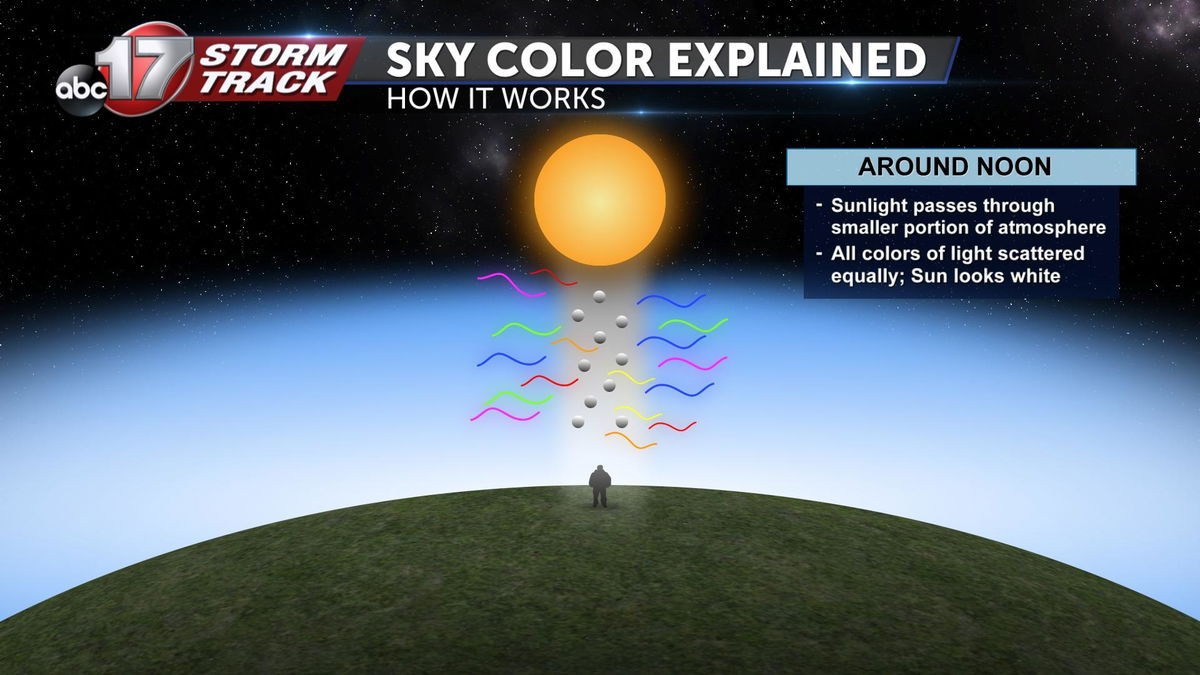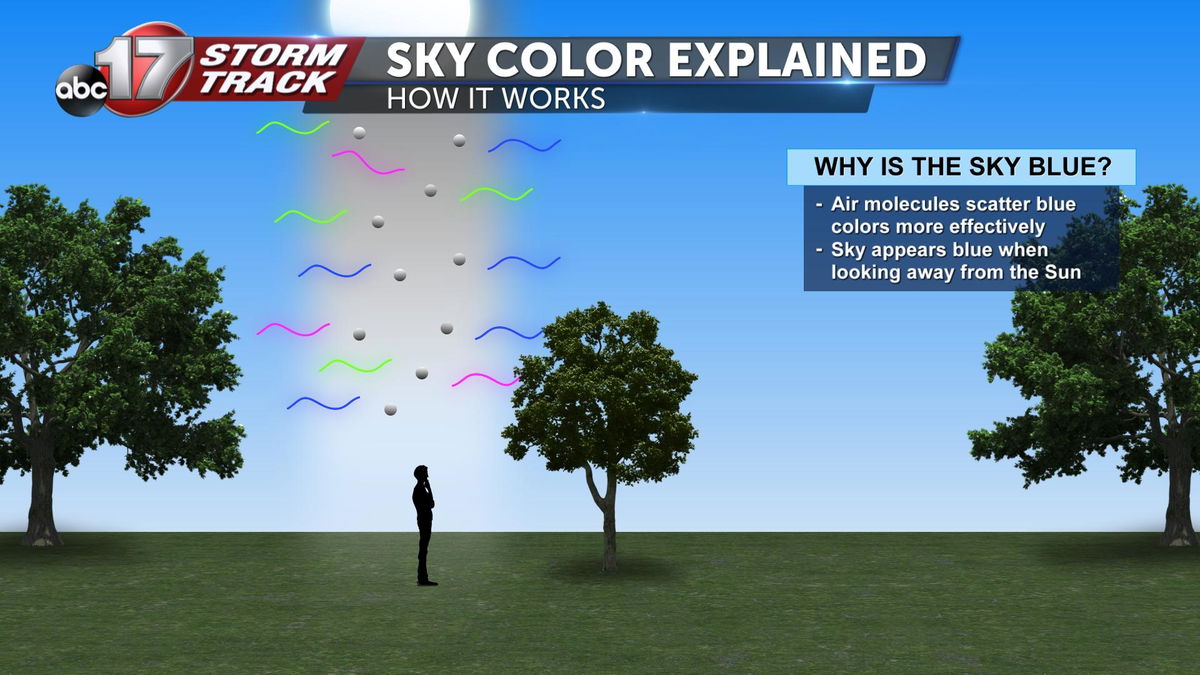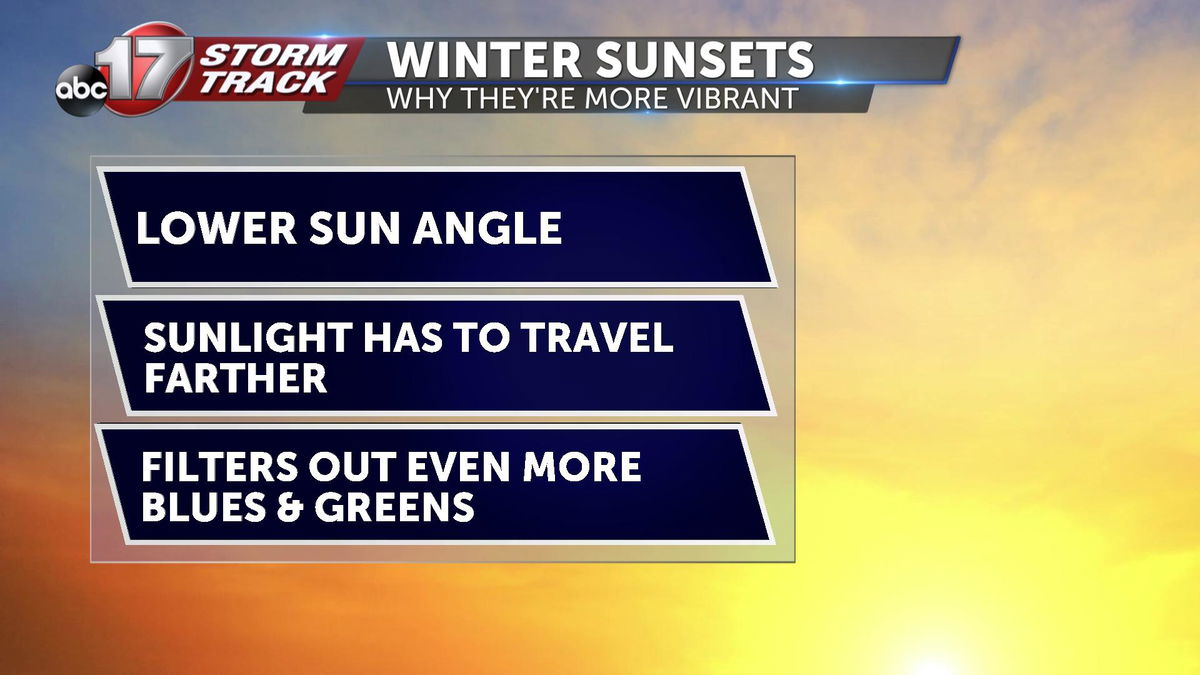How the sky gets its colors
Most people have looked up into the sky on sunny days like today and noticed the blue hue. But, not many people wonder on a daily basis what gives the sky this color. From blue on a sunny day, to red and orange during the sunset, what changes?

To find the answer, you must first start out with a beam of sunlight hitting an air molecule. When this happens all colors of the visible light spectrum are scattered.

Beginning at noon, light from the sun has the least amount of atmosphere to pass through. This means there are less particles for the sunlight to pass through. This causes the observed light to come off as white due to all spectrums of light being scattered equally. This period of an observed white sky is typically very short as the sun will not remain directly overhead very long.

On mostly sunny sky conditions, the sky reveals a blue hue. This occurs because the sunlight is still passing through thinner amounts of the atmosphere. Air molecules successfully scatter blue visible light at an increased rate compared to other colors.
During the hours nearest to sunrise and sunset, the sun is presented at a lower angle meaning the light has to pass through an increased amount of the atmosphere. This causes lights of shorter wavelengths such as blue light to be filtered out even more leading to an array of vibrant red, yellow, and oranges.

During the winter months, the northern hemisphere receives less direct sunlight due to the earths tilt meaning the sunlight has to travel through larger amounts of the atmosphere meaning more of the red and orange colors will become even more prevalent.
